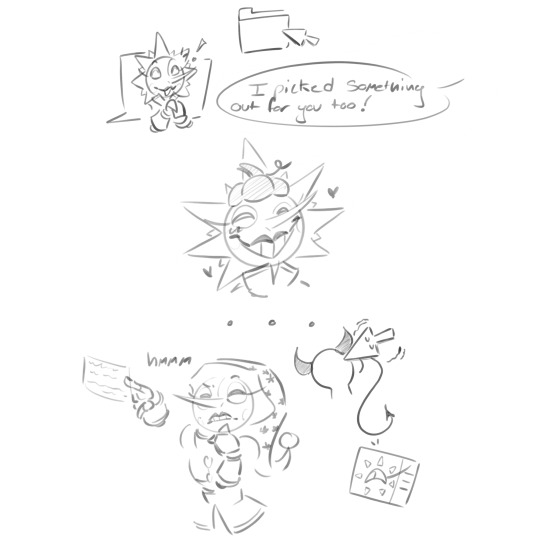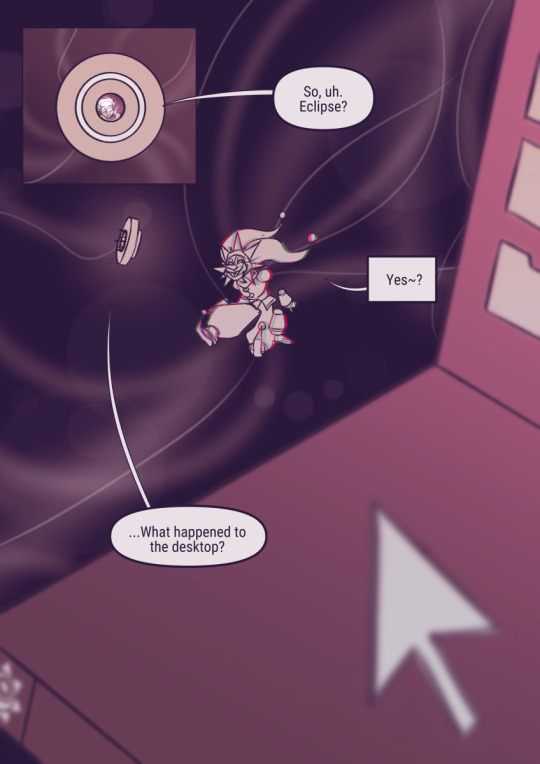#caelos eclipse
Explore tagged Tumblr posts
Text
Caelos au bois live rent free in my head so they might as well participate in the October festivities hehe

Later

Bonus

Au belongs to @caelos-legacy
#wacawacawacawaca#caelos au#we have all at some point been a victim to not matching the product description#caelos au fanart#caelos sun#caelos moon#caelos eclipse#sb daycare attendant#daycare attendant au#crunch art#sb sundrop#sb sun#sb moondrop#sb moon#sb eclipse#Halloween#cheap costumes
388 notes
·
View notes
Text







Discovery
[Image descriptions in ALT]
[Comic Index]
#fnaf#fnaf au#fnaf sb#fnaf sb au#daycare au#fnaf daycare au#daycare attentant#fnaf daycare attendant#caelos au#fnaf eclipse#eclipse fnaf#eclipse x reader#eclipse x y/n#(note: this version of eclipse was characterized before the canon character came out. because of that the character is purely fanon#comic#that's all folks! i'll make a new pinned soonish. thank you for following along#eyestrain#eye strain#(due to glitch effects)
2K notes
·
View notes
Text


simplified my design for eclipse a bit, it was a little too busy. posting this here first since i believe this deserves it :3
timelapse under the cut, warning for flashing lights!
#fnaf#five nights at freddy's#five nights at freddy's security breach#fnaf sb#fnaf sb au#fnaf eclipse#fnaf daycare attendant#daycare attendant#fnaf security breach#caelos au
1K notes
·
View notes
Text


aah ok, I will just share this and finally focus on other stuffs! (mermay??) but I been working on my own AU with Servant eclipse for MONTHS now. mostly an Fic idea- I never posted yet - the ideas had changed so I need to be sure Im not making a mess but is an AU mostly to get excuses to have a patethic lil mew mew Eclipse and Sun also Serv. Sun is here because I was an "what if" idea I dont think I'll ever finish haha anyways yes! here they are - theres lore but ehh alsoooo the face shape is mostly stolen spired by MOOOGIEE / maiko-coy / and logicpng ultimate work - Caelos! also of course crees-a !!
the bodies are inspited by BDJ dolls in most part- hehe so yea- idk I been having so much ideas and works I never shared here like redesings on the SAMS cast in different body shapes, (specially earth! give Earth her chuby body!) - many FIcs ideas- AUs- my own works no sams related- aaa so much- but I need to pay billssss haha
soon

97 notes
·
View notes
Text
WHY EARTH CAN’T BE FLAT??
Blog#80
Saturday, April 17th,2021
Welcome back,
Humanity has known Earth is round for a few millennia, and I’ve been meaning to show more methods that prove the world is not flat. I’ve had a few ideas on how to do that, but recently got an interesting incentive, when Phil Plait, The Bad Astronomer, wrote about a recently published BBC article about “The Flat Earth” society. (Most recently, rapper B.o.B. went on a Twitter rant on the topic.) Phil claims it’s ridiculous to even bother rebutting the Flat Earth Society—and I tend to agree. But the history of our species’ intellectual pursuit is important and interesting. You don’t need to denounce all science and knowledge and believe in a kooky conspiracy theory to enjoy some historical factoids about humanity’s quest for space.

Now that humanity knows quite positively that the Moon is not a piece of cheese or a playful god, the phenomena that accompany it (from its monthly cycles to lunar eclipses) are well-explained. It was quite a mystery to the ancient Greeks, though, and in their quest for knowledge, they came up with a few insightful observations that helped humanity figure out the shape of our planet.
Aristotle (who made quite a lot of observations about the spherical nature of the Earth) noticed that during lunar eclipses (when the Earth’s orbit places it directly between the Sun and the Moon, creating a shadow in the process), the shadow on the Moon’s surface is round. This shadow is the planet’s, and it’s a great clue about the spherical shape of the Earth.

Since the earth is rotating (see the “Foucault Pendulum” experiment for a definite proof, if you are doubtful), the consistent oval-shadow it produces in each and every lunar eclipse proves that the earth is not only round but spherical—absolutely, utterly, beyond a shadow of a doubt not flat.
On the off chance that you've been close to a port recently, or just walked around a seashore and gazed off blankly into the skyline, you may have seen an exceptionally fascinating marvel: Moving toward ships don't simply "show up" out of the skyline (like they ought to have if the world was level), but instead, appear to rise out of underneath the ocean.

Yet, you say—ships don't lower and ascend again as they approach our view (besides in Privateers of the Caribbean, however, we are therefore accepting that was an imaginary film arrangement). The explanation ships show up as though they "rise up out of the waves" is on the grounds that the world isn’t flat: It's round.
Imagine an ant walking along the surface of an orange, into your field of view. If you look at the orange “head-on”, you will see the ant’s body slowly rising up from the “horizon” because of the curvature of the orange. If you would do that experiment with the ant approaching along a long road rather than a round object, the effect would change: The ant would slowly “materialize” into view (depending on how sharp your vision is).

This observation was originally made by Aristotle (384-322 BCE), who declared the Earth was round judging from the different constellations one sees while moving away from the equator.
After returning from a trip to Egypt, Aristotle noted, “There are stars seen in Egypt and…Cyprus which are not seen in the northerly regions.” This phenomenon can only be explained if humans were viewing the stars from a round surface, Aristotle continued, claiming that the sphere of the Earth is “of no great size, for otherwise the effect of so slight a change of place would not be quickly apparent.” (De caelo, 298a2-10)
COMING UP!!
(Wednesday, April 21st,2021)
“HOW DOES TIME WORK IN SPACE??”
#astronomy#astronomylover#space#stars#nasa#science#astrophotography#universe#constellations#moon#astrophysics#cosmos#astronomy aesthetic#news#outer space#spacecraft#deep space nine#study space#alternate universe#white universe#skam universe#parallel universe
18 notes
·
View notes
Text
tagged by dear jo @ofthelostandfound to list 3-5 snippets of literature/media that live in your head rent-free to the point where you have them memorized; write them down from memory, no cheating allowed:
pater noster qui es in caelis sanctificetur nomen tuum, adveniat regnum tuum, fiat voluntas tua sicut in caelo et in terra. (& etc., my latin spelling is rusty as shit so i’m not gonna type out the whole thing lol. is this cheating?? idk my brain just starts reciting it the moment it gets bored so)
“i kneel into a dream where i am good and loved. i am good. i am loved. my hands have made some good mistakes. they can make better ones.” - uhh i think it’s by natalie wee?
“he is constructing a god out of my body and i do not stop him. this will make a ghost of him and me. but tonight he needs an altar and i’m not here to be brave.” - i CANNOT for the life of me recall the source and google isn’t helping?? i’m sorry. i’m just a silly pigeon. (edit: jo found the source on my own blog whdbajbsak i’m a dumbass, it’s by clementine von radics)
“i want to utter you. i want to portray you not with lapis or gold, but with colors made of apple bark. there’s no image i could invent that your presence wouldn’t eclipse.” - rilke
“i will explore you and mine you and you will redraw me according to your will. we shall cross each other’s boundaries and make ourselves one nation. scoop me in your hands for i am good soil. eat of me and let me be sweet.” - j. winterson
(tiny bonus, not really whole snippets, just smth i say on a daily basis:
“o god, make me good but not yet” - brideshead revisited; “it is a serious thing just to be alive on this fresh morning in the broken world” - m. oliver)
tagging @arunima @kxowledge @dakotajohnsongf @dreamprophet @thotfuss & literally anyone who wants to do this (also sorry if y’all have already been tagged ily)
12 notes
·
View notes
Text
Index
• Four Diagrams of Solar Eclipses, Buno Johannes
• Geometric figure of earth, sun, and moon calculated by Aristarchus
• Poltemy’s Orbis Pictus, circa 100 - 178 AD
• Eratosthenes’ Commentary on Aristotle's De Caelo
• Aristotle’s On the Heavens
• Irving’s The Life and Voyages of Christopher Columbus
• Eratosthenes’ Dioptres
0 notes
Link
Jesús Zamora Bonilla January 16, 2017
It is said that Washington Irving’s biography of Christopher Columbus, published in 1828, was the work that started the legend that the discoverer of America was the person that convinced the ‘nearly medieval’ Europeans of his time of the sphericity of the earth, a legend that has captured the popular imagination since then. Nothing could be, however, farther from the truth, for all educated people during the Middle Ages knew perfectly that the earth was round, especially after the cosmological works of Plato (Timaeus), Aristotle (De Caelo, Physics) and Ptolemy (Almagest) were translated into Latin and commented by scholastic philosophers after the 11th and 12th centuries. Actually, the roundness of the earth was such a trivial fact that Thomas Aquinas, in is Summa Theologica (13th century) put it as an example of a fact that is beyond any reasonable doubt, for there are many ways of proving it, the most important ones being that mountains are seen before the cost from ships approaching land from the see, that the shadow of the earth during moon eclipses is always round, and that, since the earth is the most heavy element, tending naturally towards the centre of the universe, it would tend to accumulate there from all directions with the same intensity. The two former arguments are ‘empirical’, and equally valid in Aquinas time than now, whereas the third one is ‘theoretical’, grounded in a theory (ancient Greek cosmology) in which we don’t already believe, but that is closely reminiscent of our own explanation of why planets are round due to the influence of gravitation.
But, if the roundness of the earth was common knowledge within cultivated Europeans of the time of Columbus, what was all the fuss about? It is well known that the great discoverer grossly underestimated the size of the earth: whereas most of the astronomers of his time accepted a figure very close to the real one, and based on Eratostenes measures in the 3rd century BC, Columbus thought it was much smaller, so that the distance from Spain to Japan crossing the Atlantic should be of around 3000 miles, instead of the approximately 12000 miles really separating them. Of course, had no big mass of land existed in between, the travel would have taken too much time for a ship to transport enough provisions. It is reasonable, hence, that most of the governments of the time refused to finance such a crazy and suicidal expedition… But what made the project really suicidal for Renaissance intellectuals was not their (mostly right) assumption about the real distance between Europe and Asia through open see, for after all, there could be some intermediate land between both continents, like the Canary Islands of the Azores Archipelago, colonised by Spain and Portugal less than a century before. Or couldn’t they?
Image of the spheres of the four elements in a printed edition of “De Sphera”, Venice, 1485 (earth: zigzag; water: wavy; air: clouds; fire: flames; air and fire not to scale).
Well, the fact is that the learned people of the time had an argument, or believed in a theory, according to which it was actually impossible that something like America, nor even a set of small islands, could exist in the mid of the ocean, that is, in the mid of the ocean assumed to extend from Western Europe to Easter Asia. The responsible of this theory was a man of probably English ascent called John of Holywood (not to confuse with Hollywood), better known by his Latinized name Johannes de Sacrobosco, the author of the most influential treatise of astronomy during the late Middle Ages, and well into the 17th century, De Sphera (written approx. 1230 AD), and also one of the introducers of Arabic numerals in Europe.
Though the title of his book refers not to the sphere of the earth, but to the shape of the whole universe, whose most external limit would be the sphere of the fixed stars, it also clearly demonstrated the sphericity of the earth itself, by basically the same arguments we have mentioned regarding Aquinas, and that date back at least to Aristotle in the 4th century BC. Actually, Sacrobosco’s schema of the world is basically that of Aristotle’s cosmos, implemented with the planetary theory of Ptolomy (i.e., the theory of epycicles), of which De Sphera is a short popularisation, and the first systematic introduction in Western Europe to the Almagest after its translation from Arabic to Latin in Toledo a few decades before.
As in the case of Aquinas, Sacrobosco, also a monk, attempted to combine in a systematic exposition the known empirical facts (observations of the skies and of the earth’s surface) and the theoretical understanding of the world, that came basically from Aristotle’s Physics. It is known that, according to that cosmology, the universe is made out of five different ‘elements’: ether, of which the celestial spheres are made, and the ‘sub-lunar’ four classical elements. These four elements are ordered in the world according to their density, the denser ones occupying the closest positions to the centre of the cosmos, and hence earth is in the most ‘inferior’ position, then it is placed water, on top of which is air, and finally fire, that rises till touching the orbit of the moon. Ether would be still ‘lighter’ than fire, and this is the reason why it occupies the most privileged, celestial position.
This vision of the cosmos also implied that (for what we would now call ‘reasons of symmetry’) of every element there would be an equivalent amount (i.e, ‘mass’, or simply ‘weight’): this is why the size of the celestial orbits is so incredibly bigger than the ‘sub-lunar’ world (i.e., the space comprised between the moon and the earth): because ether weights very, very little. Analogously, fire weights much less than air, and air much less than water, and this is why the moon is relatively so far from the surface of the earth (‘far’ in a human scale, but, as we have just seen, very close as compared to the total size of the universe, or as compared to the distance from the moon’s orbit to the fixed stars), for the space between the surface of the earth and the orbit of the moon has to contain a incredibly large volume of air and fire.
http://mappingignorance.org/fx/media/2017/01/Image-2.png
Reproduction of the scheme of Sacrobosco’s earth and water sphere in Jean Bodin’s “Universae Naturae Theatrum”, 1596.
And, what happens with the two remaining elements, water and earth. The same reasons of symmetry still rule here, and hence, since water is less dense than ‘earth’ (by between one fifth or one tenth, more or less, depending on what kind of nature we assumed ‘pure’ earth has, i.e., more ‘earthy’, more ‘rocky’, or more ‘metallic’), there should exist a much bigger volume of water than of earth in the world, so that the total ‘weight’ of both elements remain the same. Hence, the complete picture of the Aristotle-Holywood cosmos would be roughly the following: a tiny sphere of ‘earth’ in the middle, surrounded by a sphere of water of about ten times the size of the former, this surrounded by a sphere of air still much bigger, this one surrounded by a sphere of fire much, much, much bigger, and this one surrounded by an astonishingly (‘astronomically’) big system of spheres made of ether (those of the Moon, Mercury, Venus, the Sun, Mars, Jupiter, Saturn, and the fixed stars, in order of distance from the centre of the world). This is a nice picture, but one that has a major problem of empirical adequacy: if it were true, we would be drowned by a few thousands of kilometres of water, which obviously is not the case. The question is, hence: if earth weights more than water, why it is that there is some earth over the surface of water? Why is not all earth just sunk?
The monkish mind of Sacrobosco had an expedient answer: when creating the world, God displaced a little bit the sphere of earth from the centre of the universe, so that a tiny fraction of earth emerged out of the surface of the sphere of water, a part big enough to contain the continents known by the time (Europe, Asia and Africa, i.e., the ‘old world’), a portion of dry land of which it could be easily assumed it had an approximately circular shape. A clear and obvious consequence of this image of the world is that no other masses of dry land can exist, apart of the ‘old world’, for, as we started to navigate on a ship from, say, Lisbon towards the west, the surface of the earth sphere is progressively more and more deeply submerged under the surface of the sea (the water sphere), exactly till the middle of the trip, when we the distance between the surfaces of both spheres starts to decrease again.
Since this idea of the cosmological distribution of the four elements was the prevailing one in Columbus times, it was clear for the minds of most intellectuals that nothing like America could exist. And this was why its discovery started not only to change the societies of both sides of the Atlantic ocean (especially those of the west side), but also to break into pieces the idea that Aristotle and Ptolemy were people in which could trust enough when trying to understand the structure of the cosmos. By the way, this also would lead to the modern idea of the ‘earth globe’, i.e., a planet basically made out of solid rock, with just a tiny amount of water scattered on its surface, and also a tiny layer of air surrounding it, something that, in its turn, started to discredit the theory of the ‘four elements’.
References
Sacrobosco, J., De Sphera, translation of L. Thorndyke, online
Wootton, D., 2015, The invention of science, London, Harper Collins.
Written by
Jesús Zamora Bonilla
Jesús Zamora holds PhDs in Philosophy (1993) and Economics (2001). Professor of Philosophy of Science and Director of the master's program on Science Communication and Journalism at UNED. Prolific author.
0 notes
Text


glad yall like my eclipse doodles, here's a couple more :3 im in a certain mood lately
#fnaf#fnaf au#fnaf sb#fnaf sb au#daycare au#fnaf daycare au#eclipse fnaf#eclipse x reader#eclipse x y/n#fnaf eclipse#daycare attentant#fnaf daycare attendant#caelos au
1K notes
·
View notes
Text
This user might have a lil crush on caelos au sun

au belongs to @caelos-au
#I know moon likes snacking on viruses but I don’t know what sun likes hmmmm#this was the best I could come up with#caelos au fanart#caelos au#caelos sun#caelos moon#caelos eclips#moon and eclipse too but if I had to chose hehe#sb daycare attendant au#amazing au#sb daycare attendant#daycare attendant au#daycare attendant#sb sundrop#sb sun#crunch art#if your looking at the hands no your not#just look at him aaaaaaaaaaaaaa#what I would give to have that going into the computer machine and hang out with sun for a day
416 notes
·
View notes
Text
Have been thinking of them

caelos au by @caelos-au
#what I would do to have all of them on my drawing tablet!#sb daycare attendant#caelos au#sb sundrop#sb moondrop#sb eclipse#sb sun#sb moon#sundrop#moondrop#crunch art#daycare attendant fanart#would die to give them kisses I just love everything about the design of their face!
542 notes
·
View notes
Note
That's a lot of welcomes in that Eclipse art. Is my guy okay?

he is! he's just being silly
(if the code makes no sense, it's explained along the description in alt text)
#ask post#fnaf#fnaf au#fnaf sb#fnaf sb au#daycare au#fnaf daycare au#eclipse fnaf#fnaf eclipse#daycare attendant#fnaf daycare attendant#caelos au
636 notes
·
View notes
Text

expressive happy boy²
#fnaf#fnaf au#fnaf sb#fnaf sb au#daycare au#eclipse fnaf#fnaf eclipse#fnaf daycare au#daycare attentant#fnaf daycare attendant#caelos au
680 notes
·
View notes
Note
I wanted to ask, will you continue with the au of the daycare attendants? ( just curious since you have now Rigel and Vega as their succesors¿ by the way, I LOVE the ukagaka you just relased, I like a lot his company :] )
CaelOS as a personal project is more of a direct evolution of the DCA-related AU rather than a branch from it <:) even if i wanted to work on them in parallel, i would have to overhaul the entire thing because i see Sun and Moon's personalities differently to Aster's.
the original Sun and Moon personalities i had in mind for the AU are just. kind of lost? in a sense? the few recent comics have been written mostly As aster but with different characters on top. in a sense you could see it as natural character evolution
anyway this blog will cease posting once i post the final comic post (actually meeting Eclipse), and make a new pinned post relaying what happened to the AU and where to go follow along its continuation. it's been mentioned a few times down the line, but the ukagaka development swept me away from actually working on the comic kladfhsdjf
i'm very happy you enjoy them! even if i had to fix a bunch of things i missed quick after posting people still seem to love Aster and that alone means the world to me <:')
26 notes
·
View notes
Note
Hi! I wanted to ask about your Rigel and Vega ukagaka.
I remember seeing the CaelOS AU a while back and thought it was really neat, but I hadn't kept up with looking at it in a while and don't know who Rigel and Vega are. Are they just new names for Sun and Moon? Or are they new characters?
CaelOS AU (@caelos-legacy) still exists! but is ending very soon to allow me more brainspace to work on the project
Aster (consisting of Rigel, Vega, and Aldebaran) is a collective of characters heavily inspired by the concept of Sun, Moon, and Eclipse and some of fanon ideas i've naturally picked up.
Because of their distance from the canon FNAF characters, in design and personalities, i consider them my OCs! though i don't blame people for mixing them up, it doesn't really seem like i've done a good enough job redesigning them to be distinct from a fandom AU...
anyway the Project i call CaelOS is the AU being rebuilt into my own personal thing, and Aster is AU's DCA's successor. so, yes, they're new characters, but they're not that different from the personalities they've had in the AU, or at least the differences are more subtle. that's more for the readers to judge tho
#ask post#even designs aside not changing the name was probably my biggest mistake#i decided to keep it because it's a title that i came up with on my own and doesn't inherently have ties to the fandom. i still like it gdi
17 notes
·
View notes